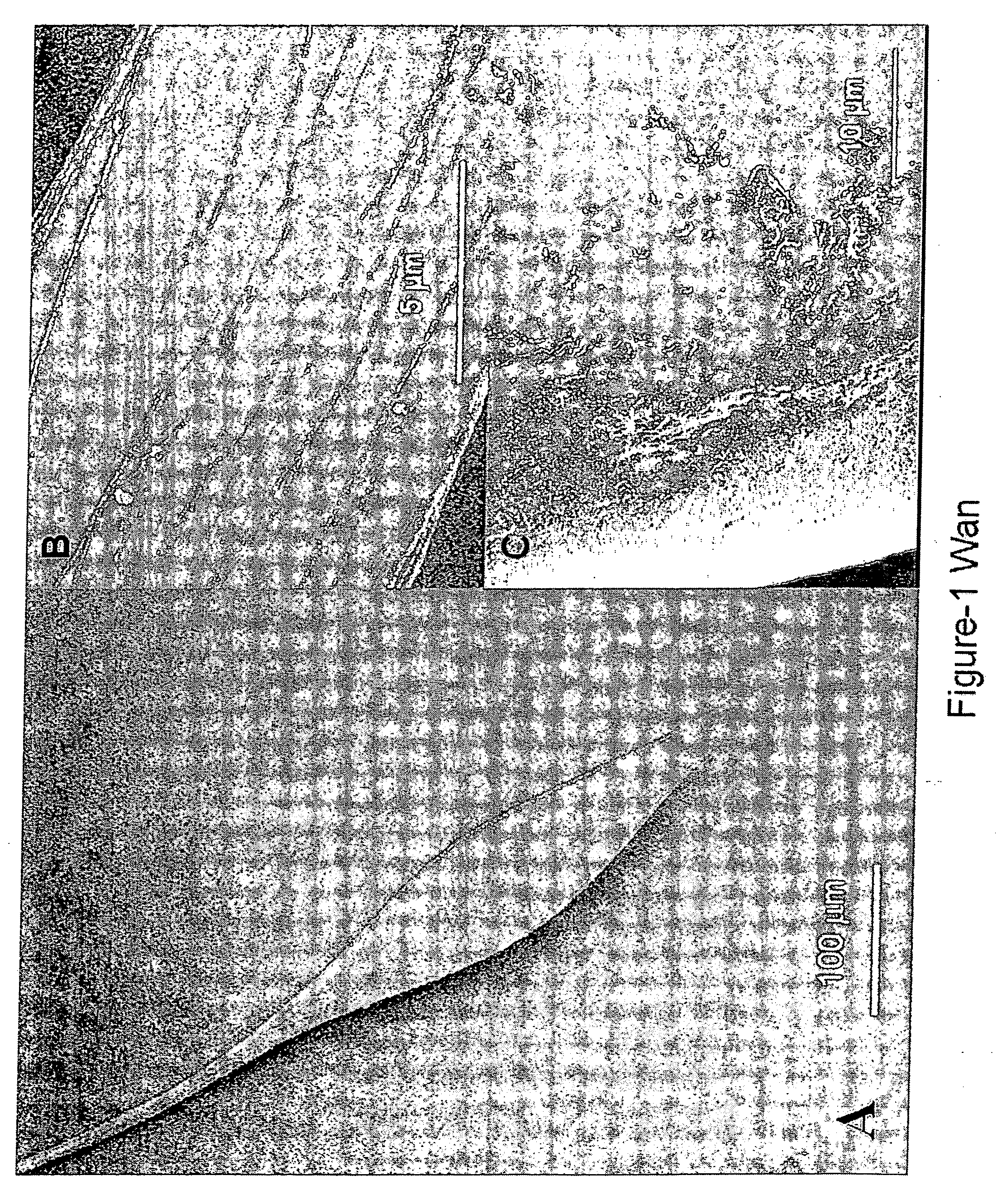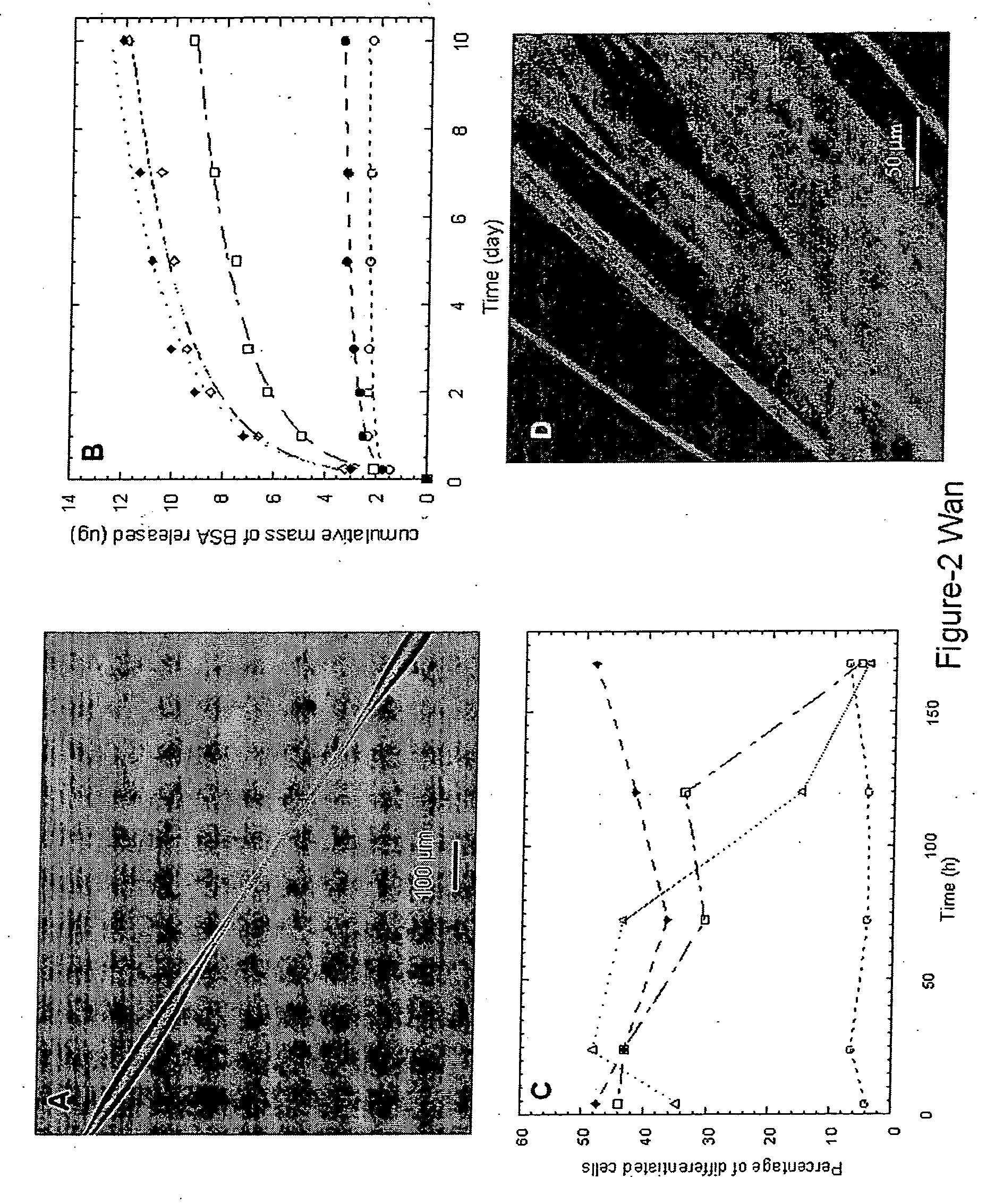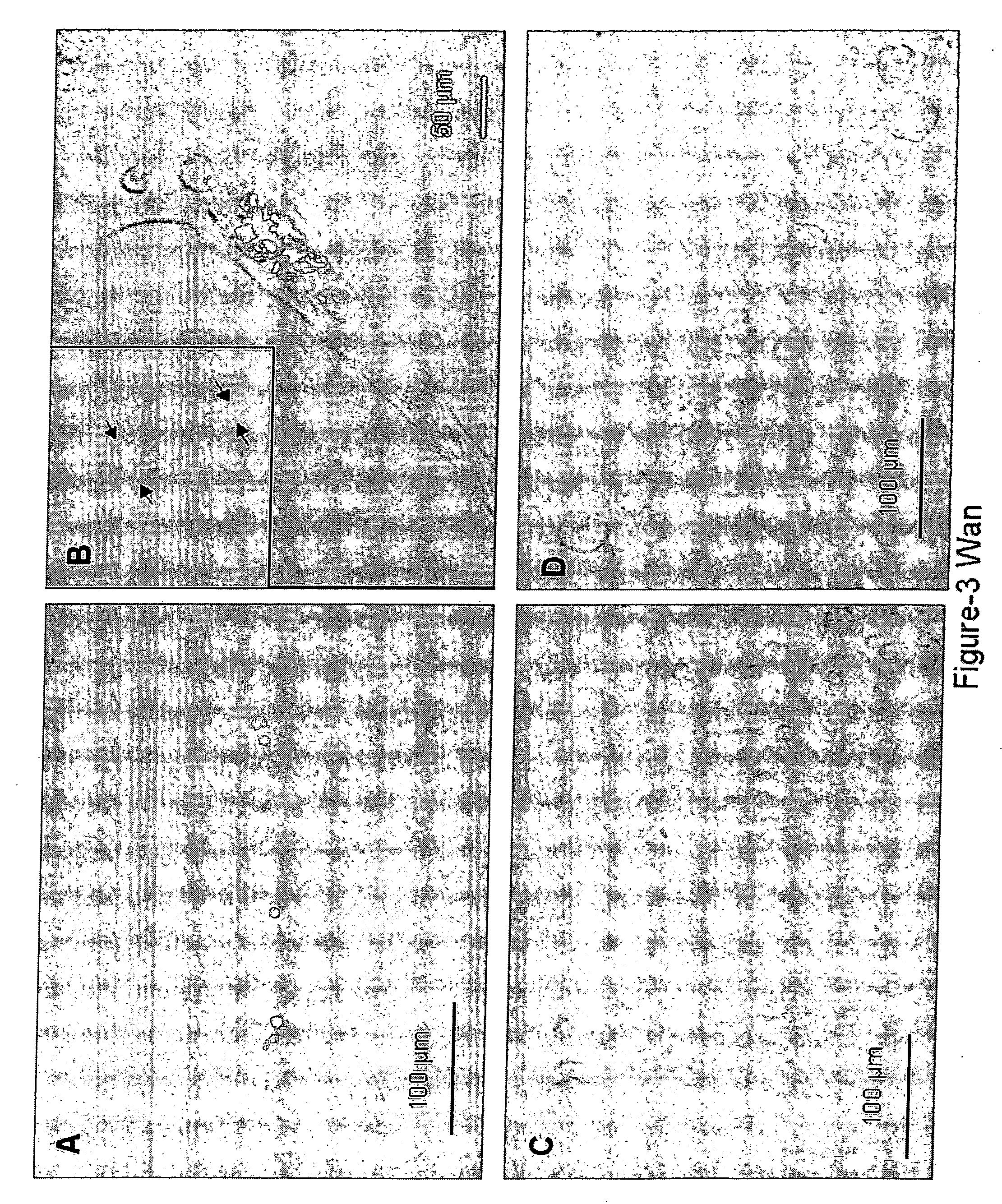Fiber constructs and process of fiber fabrication
- Summary
- Abstract
- Description
- Claims
- Application Information
AI Technical Summary
Benefits of technology
Problems solved by technology
Method used
Image
Examples
example 1
[0098] Fiber Fabrication.
[0099] Fiber was fabricated in the following way: two polyelectrolyte solutions were placed in close proximity on a level surface, then brought into contact by means of forceps or a needle. The mixture in the region of the interface was then scooped up in a continuous upward motion to create a fiber, which could be drawn continuously until one of the polyelectrolyte solutions was depleted. A scanning electron micrograph of a typical fiber is shown in FIG. 1. The fiber surface exhibits a pattern of parallel ridges, as if it were composed of a conglomerate of finer fibers. Interestingly, beads are present at regular intervals along its axis. In contrast to its polyelectrolyte precursors, the fiber is water insoluble.
[0100] Fiber was fabricated by drawing up the interface between two oppositely charged polyelectrolyte solutions using a bent syringe needle (25G3 / 8) attached to the slider of a linear motor (LinMot, Switzerland) with a stroke length of 30 cm. A ...
example 2
[0102] Encapsulation and Release of Protein.
[0103] Bovine serum albumin (BSA) was encapsulated in water soluble chitin-alginate (WSC-A) fibers at different polyelectrolyte concentration ratios. The protein was uniformly distributed, as evident from the light microscope image of encapsulated FITC-BSA. (FIG. 2A) Even after washing, a protein loading level of at least 40% (mass protein / mass polymer) could be achieved. This loading level is considerably higher than that typically obtained by conventional solvent evaporation techniques for formulation of controlled release microspheres. Since the solution goes completely into fiber formation, the efficiency of protein encapsulation is close to 100%.
[0104] The cumulative release profiles of BSA from the fiber are shown in FIG. 2B, typical of a diffusion-controlled release mechanism. As the chitin to alginate concentration ratio increased, a more sustained release of protein was observed. This can be explained by the net negative charge ...
example 3
[0109] Encapsulation of Cells.
[0110] Cells encapsulated in the fiber retained good viability. Two primary cell lines of human dermal fibroblasts (HDF) and bovine pulmonary artery endothelial cells (BPAEC) were encapsulated in WSC-A fibers. Cell viability was established by means of a Live / Dead viability / cytotoxicity kit (Molecular Probes) and a WST-1 assay (Roche Diagnostics GmbH). The WST-1 assay for BPAEC gave relative absorbances of 100%, 95%, 96% and 98% at days 2, 5, 7 and 10 respectively, reflecting the activity of viable cells. The relative absorbances for HDF were 100%, 91%, 74% and 82% for the same time periods.
[0111] In contrast to their morphology in monolayer culture, encapsulated HDF and BPAEC were more spherical in shape (FIG. 3A,B). Cells could be entrapped within both bead and fiber regions, and remain viable. Cell clumps in the fiber region appeared as if they were prying open thinner fibers that composed the main fiber, enlarging its diameter significantly.
[0112...
PUM
| Property | Measurement | Unit |
|---|---|---|
| diameter | aaaaa | aaaaa |
| diameter | aaaaa | aaaaa |
| diameter | aaaaa | aaaaa |
Abstract
Description
Claims
Application Information
 Login to View More
Login to View More - R&D
- Intellectual Property
- Life Sciences
- Materials
- Tech Scout
- Unparalleled Data Quality
- Higher Quality Content
- 60% Fewer Hallucinations
Browse by: Latest US Patents, China's latest patents, Technical Efficacy Thesaurus, Application Domain, Technology Topic, Popular Technical Reports.
© 2025 PatSnap. All rights reserved.Legal|Privacy policy|Modern Slavery Act Transparency Statement|Sitemap|About US| Contact US: help@patsnap.com



